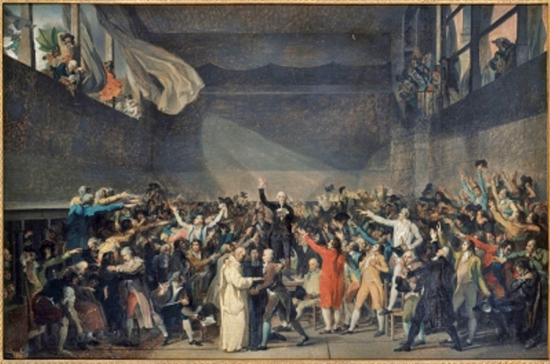

The hour is in the 0.23 range, both other parameters are in the 0.59 range. Sexagesimal hour number, sexagesimal minute number and sexagesimal second number. These parameters cannot be specified with the sexagesimal time parameters abt_ xxx (see below). The hour is in the 0.9 range, both other parameters are in the 0.99 range. In the case of additional days, the range is 1.5 or 1.6 depending on the year (leap year or normal).ĭecimal hour number, decimal minute number and decimal second number.
French revolutionary calendar farm plus#
Month number, in the range 1.12, plus number 13 to designate the end-of-year additional days.ĭay number, in the range 1.30. Year 1 corresponds to Gregorian years late 1792 and early 1793. This class accepts the following parameters: Yet, emphasis is on decimal time because it is more fun than sexagesimal time, which anyhow can be obtained with the standard Gregorian DateTime.pm module. The ABT accessors are provided to be historically correct, since the decimal time reform was never put in force.

The strftime and iso8601 methods use only decimal time. The accessors for ABT are abt_hour, abt_minute, abt_second and abt_hms, the accessors for decimal time are hour, minute, second and hms. The module supports both Anglo-Babylonian time (24圆0圆0) and decimal time. English speakers, please note that this has nothing to do with a 10-year period. Since the week has been replaced by the décade, the corresponding method names still are decade_number, day_of_decade, etc. And they are irrelevant for this French Revolutionary calendar module. Other reforms to decimalize the time has been proposed during the last part of the XIXth Century, but these reforms were not applied too. But this reform was put on hold after two years or so and it never reappeared. There was also an attempt to decimalize the day's subunits, with 1 day = 10 hours, 1 hour = 100 minutes and 1 minute = 100 seconds. For programming purposes, they are considered as a 13th month (much shorter than the 12 others). Since a year lasts 365.25 days (or so), five additional days (or six on leap years) are added after Fructidor. In his book The French Revolution, the XIXth century writer Thomas Carlyle proposes these translations for the month names: Vendémiaire -> Vintagearious Brumaire -> Fogarious Frimaire -> Frostarious Nivôse -> Snowous Pluviôse -> Rainous Ventôse -> Windous Germinal -> Buddal Floréal -> Floweral Prairial -> Meadowal Messidor -> Reapidor Thermidor -> Heatidor Fructidor -> FruitidorĮach month has a duration of 30 days. But it was not practical, so Romme proposed a leap year rule similar to the Gregorian calendar rule. It was therefore in tune with the republic's motto "Liberty, Equality, Fraternity". First, the republic had been established on 22 September 1792, which happened to be the equinox, and second, the equinox was the symbol of equality, the day and the night lasting exactly 12 hours each. In addition, all months have exactly 3 décades, no more, no less.Īt first, the year was beginning on the equinox of autumn, for two reasons. Therefore, the week disappeared, replaced by the décade. An attempt to apply the decimal rule (the basis of the metric system) to the calendar. The Revolutionary calendar was in use in France from 24 November 1793 (4 Frimaire II) to 31 December 1805 (10 Nivôse XIV). It means a ten- day period.įor your information, the French word for a ten-year period is décennie. This French word is not the translation of the English word "decade" (ten-year period). The documentation uses the word décade (the first "e" having an acute accent). This module implements most methods of DateTime see the DateTime(3) manpage for all methods. $dtrev = DateTime::Calendar::FrenchRevolutionary->from_object( object => $dtgreg ) DESCRIPTIONĭateTime::Calendar::FrenchRevolutionary implements the French Revolutionary Calendar. $dtgreg = DateTime->from_object( object => $dt ) # convert from French Revolutionary to Gregorian. $dt = DateTime::Calendar::FrenchRevolutionary->new( year => 8, # Use the date "18 Brumaire VIII" (Brumaire being the second month) DateTime::Calendar::FrenchRevolutionary - Dates in the French Revolutionary Calendar SYNOPSIS use DateTime::Calendar::FrenchRevolutionary


 0 kommentar(er)
0 kommentar(er)
